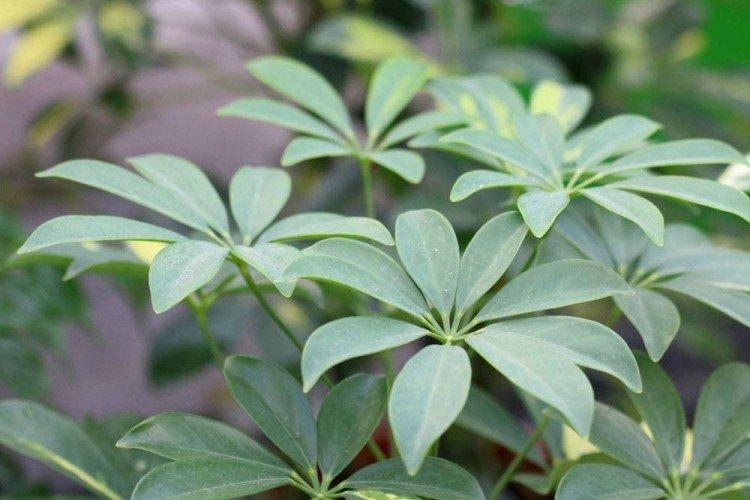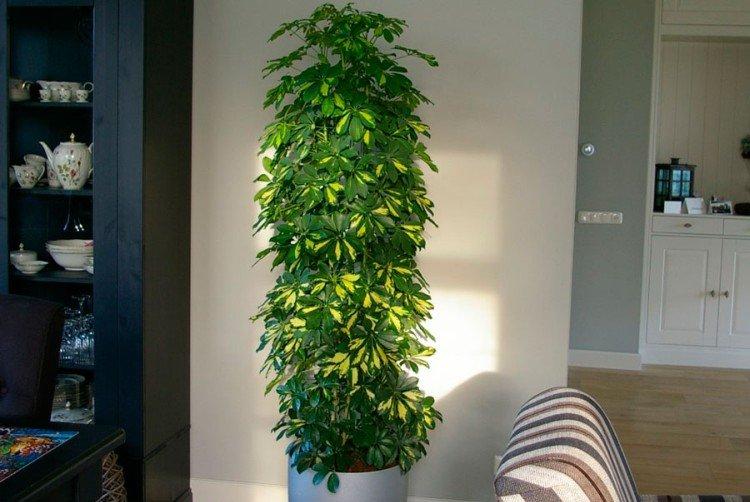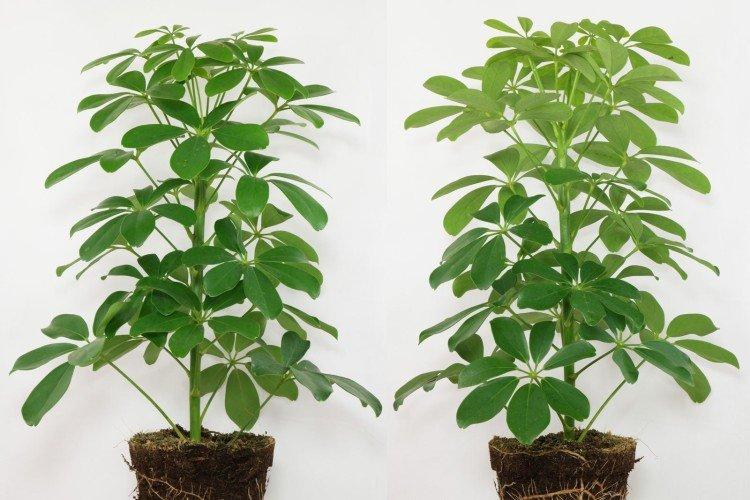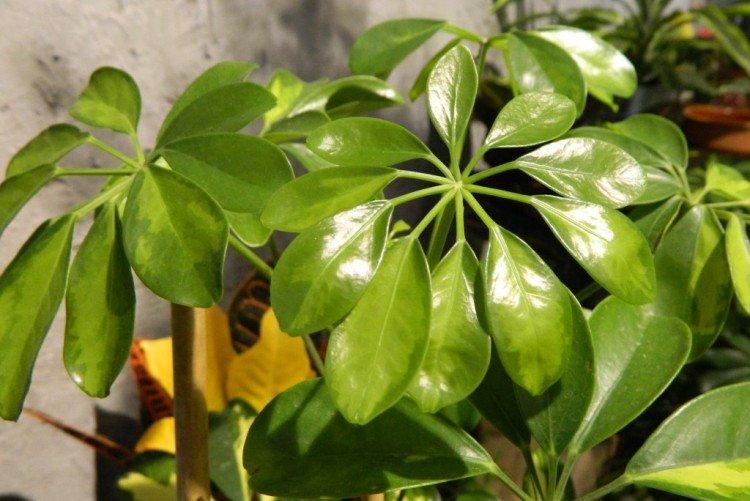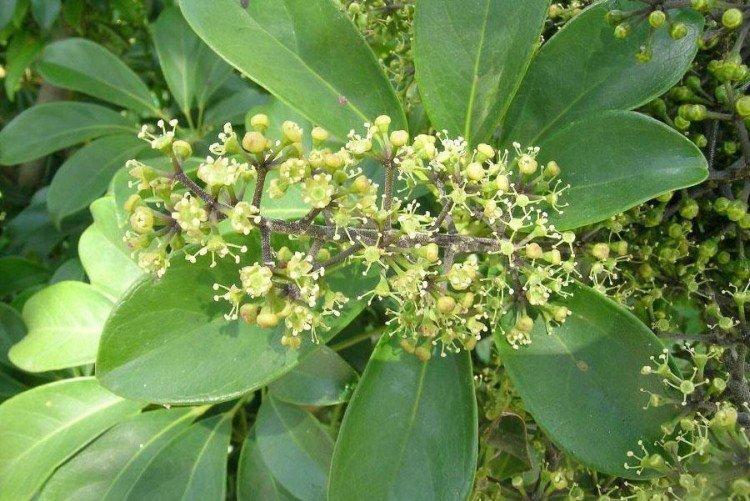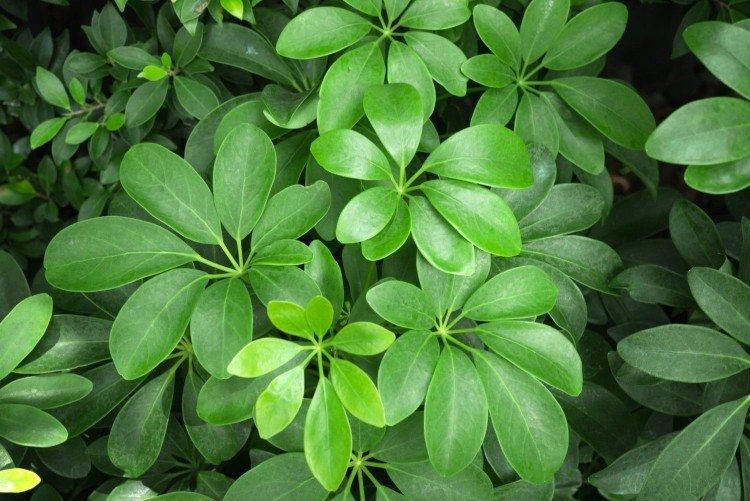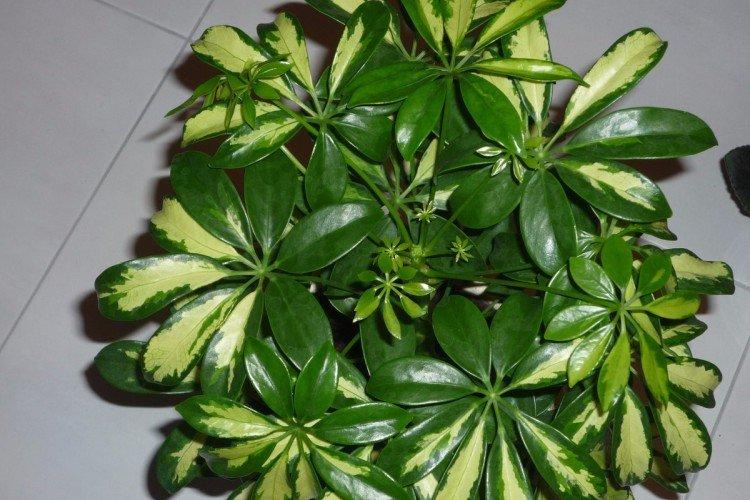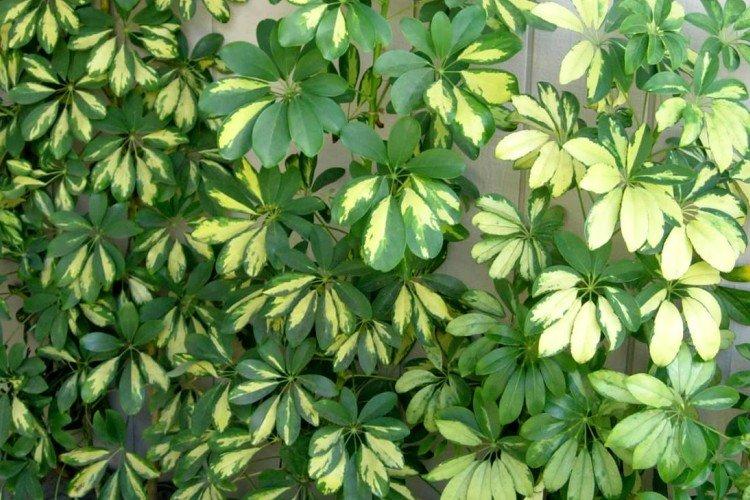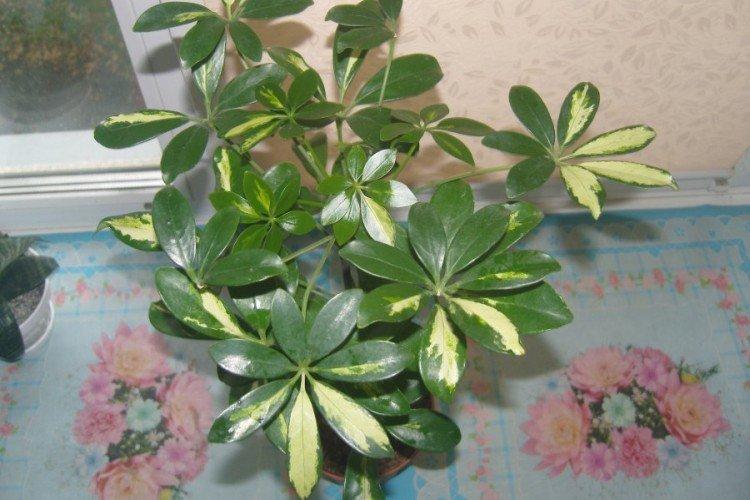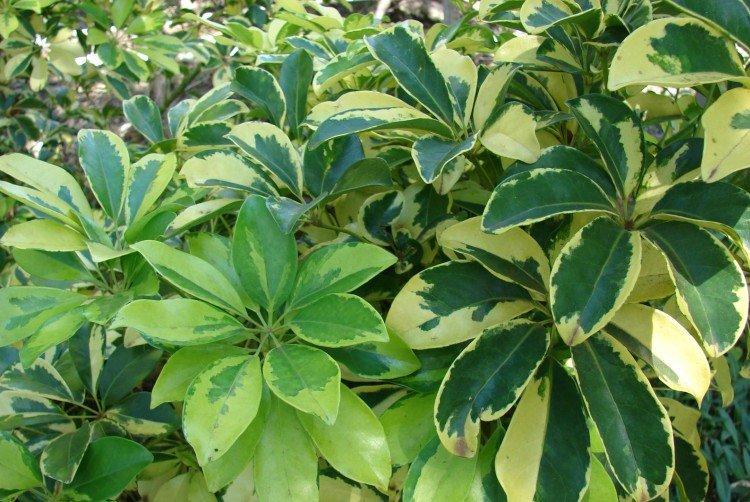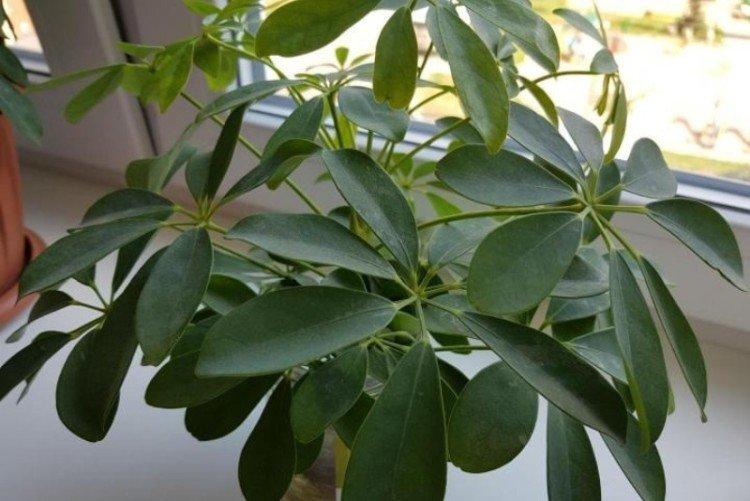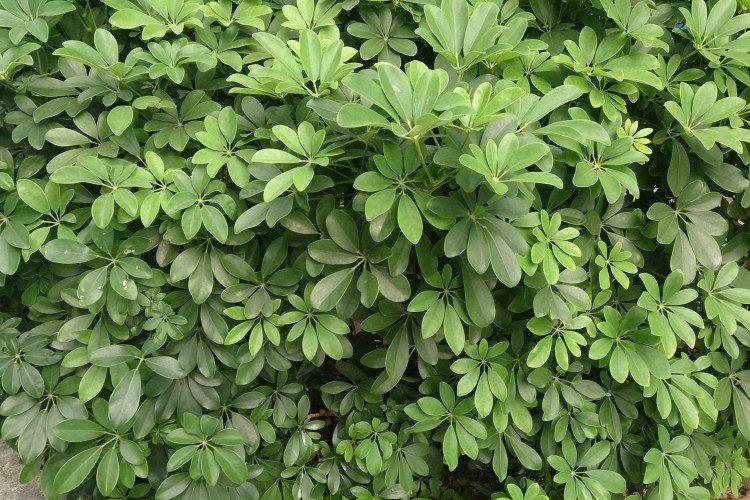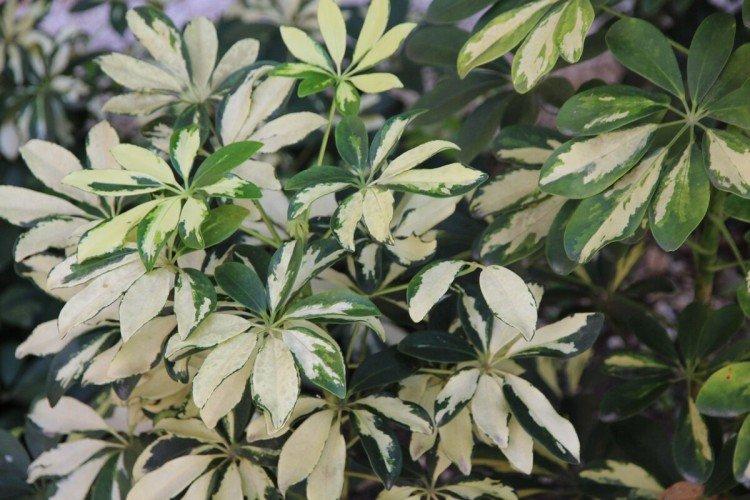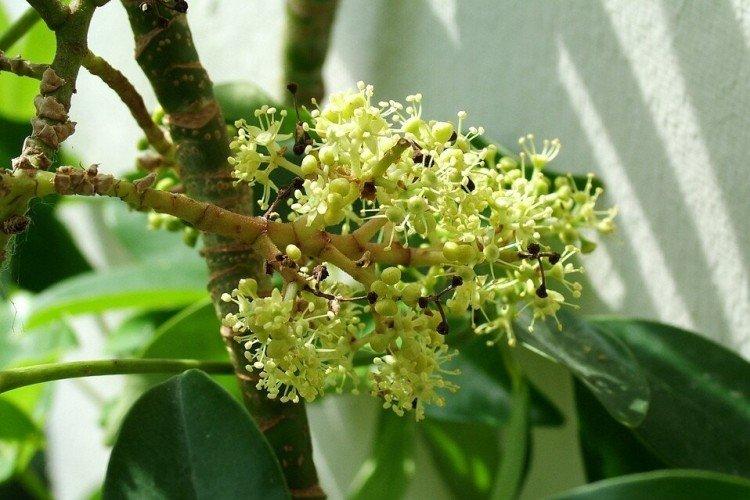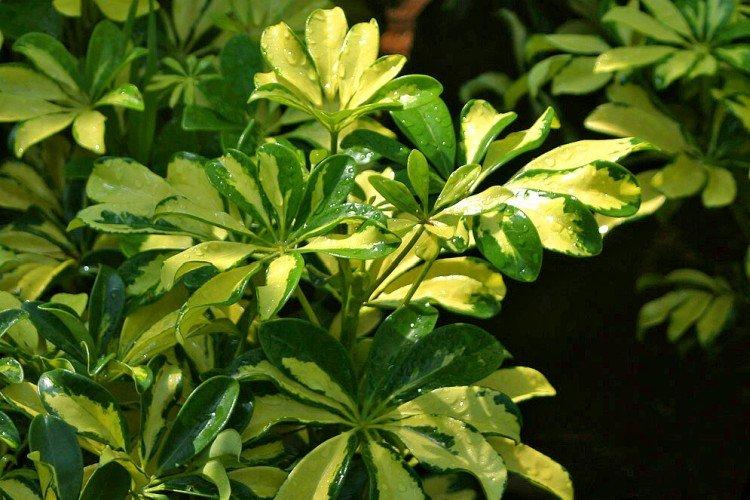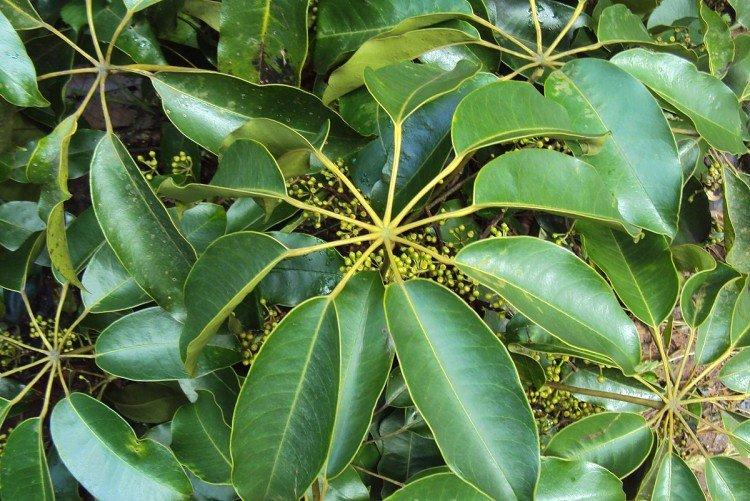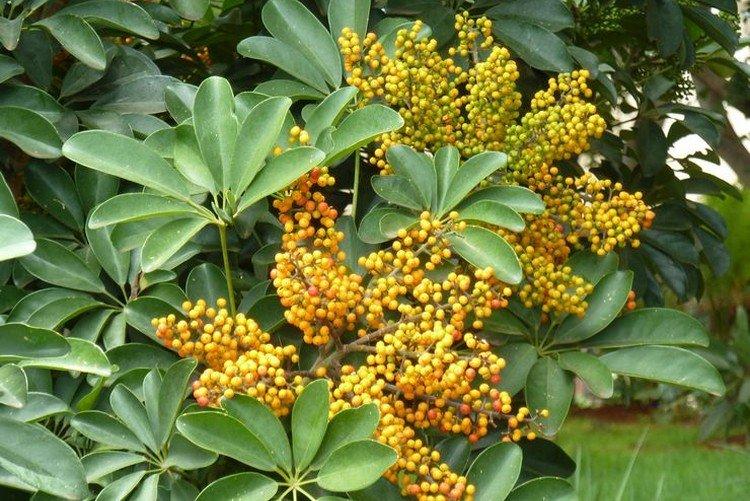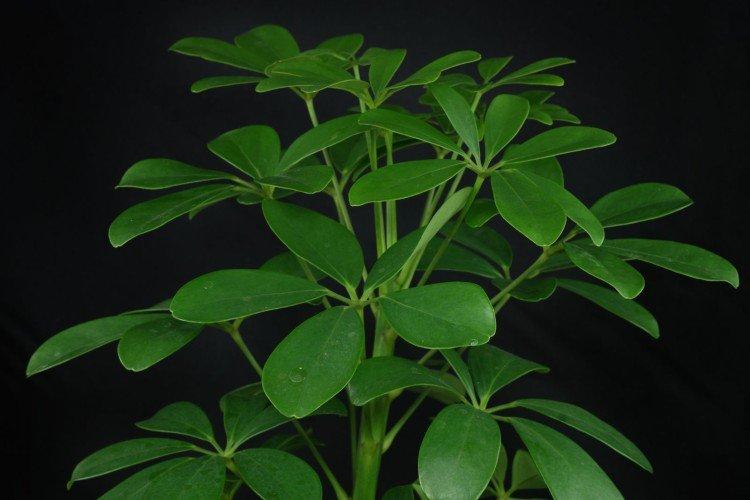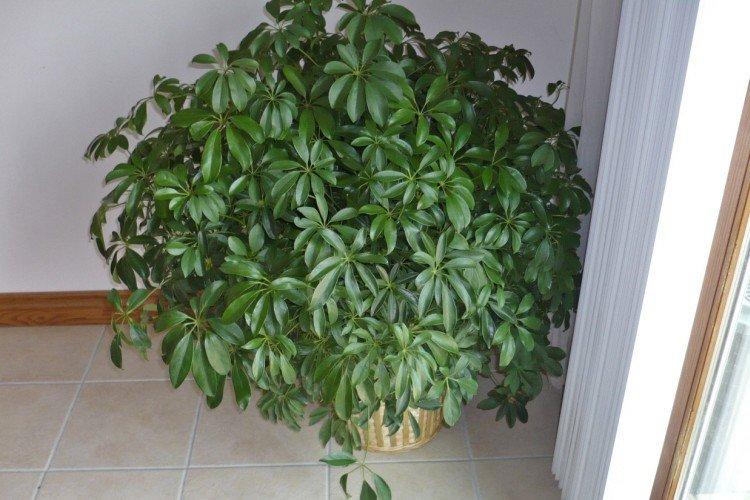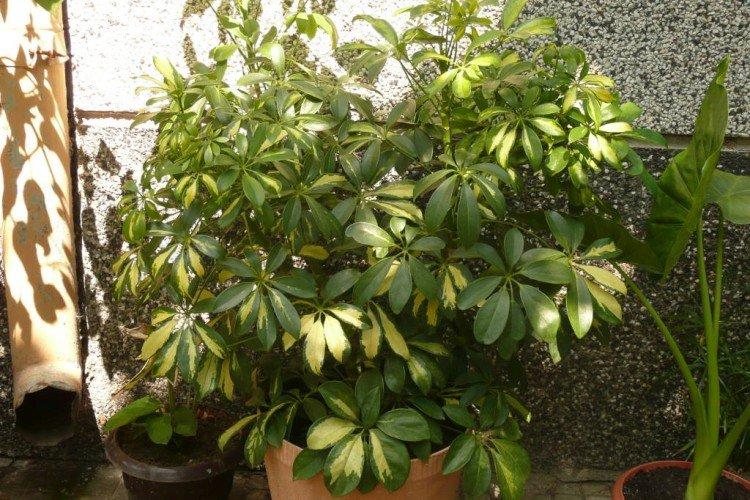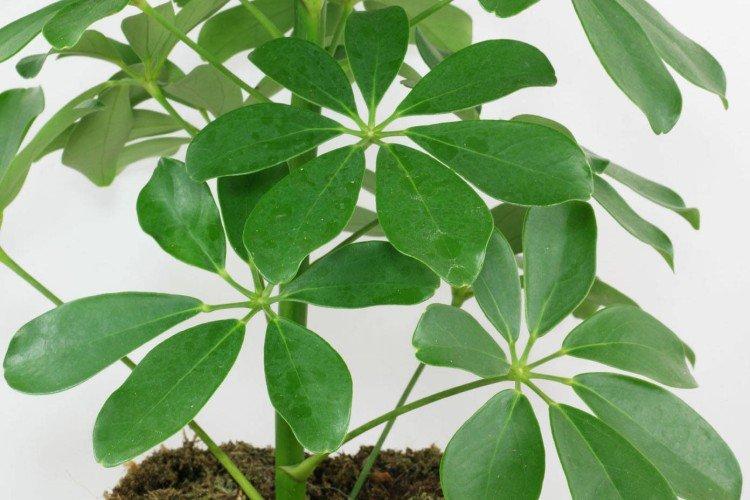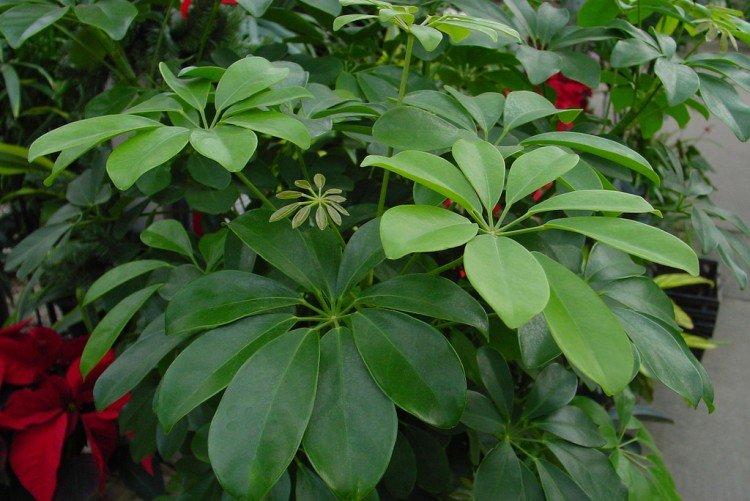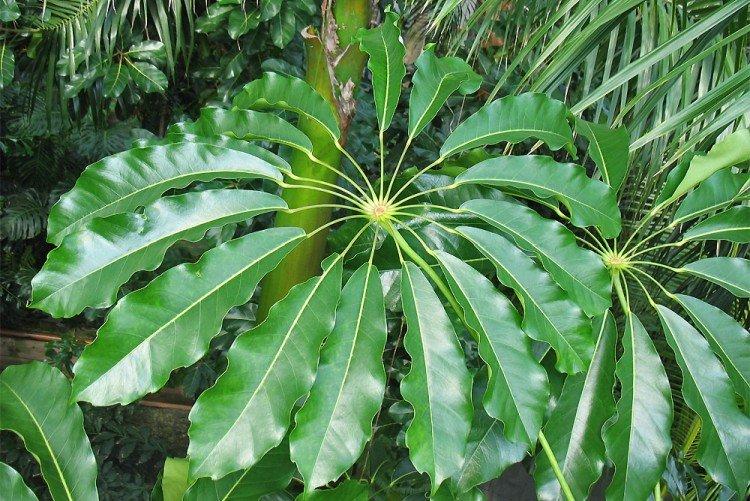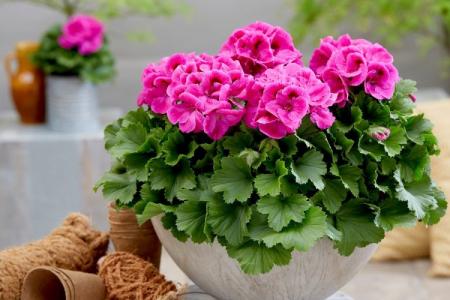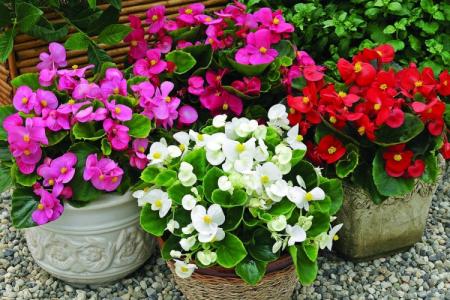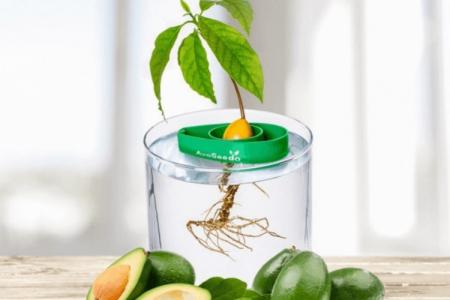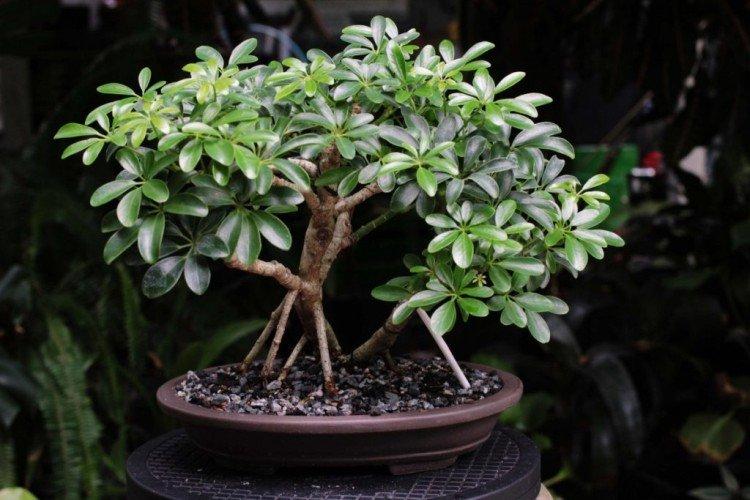
Beautiful decorative foliage plants transform any interior. They fill the house with freshness, lightness and good mood. Today we propose to talk about the sheffler - a popular and unpretentious green tree!
general information
The graceful forms of shefflers fascinate many flower growers. It is very graceful and elegant in its simplicity, and with proper care, it pleases for years with an impeccable appearance.
The types of shefflers in nature are very different from each other: here there are tall trees, and compact shrubs, and giant vines up to 20 m.But at home, even the tallest of them rarely reach 2 m.
Schefflera lives on islands, in regions with tropical climates, in Australia and South America. A common feature is spectacular lobed leaves that look like umbrellas on long stalks. Each such umbrella has 5 to 15 segments.
Treelike shefflers grow from a single thick trunk with flexible branches. Gradually, the lower part becomes bare, and the plant in part resembles a palm tree. Some species are capable of blooming, but this can only be achieved in greenhouses.
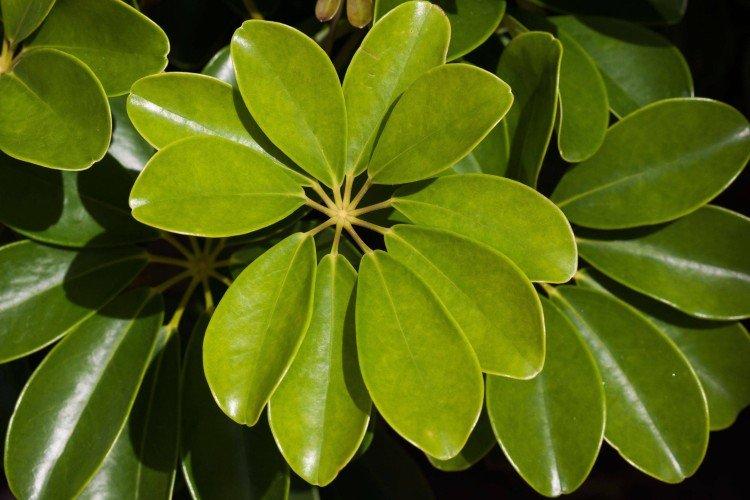
Sheffler species
The sheffler family is large and diverse - over 600 representatives. But at home, it makes sense to consider in more detail only some of them!
Star-leaved shefflera
The most popular species, which used to be singled out as a separate genus, is brassaya. This is a spectacular plant with a straight wide trunk and large glossy leaves with 10-15 lobes each.
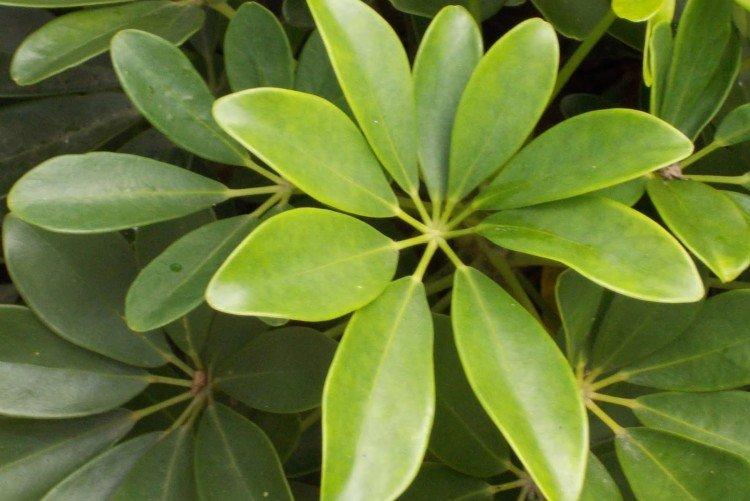
Finger Sheffler
Compact variety with relatively small leaves, 8-10 pointed "fingers" in each. There are very showy dark and variegated varieties.
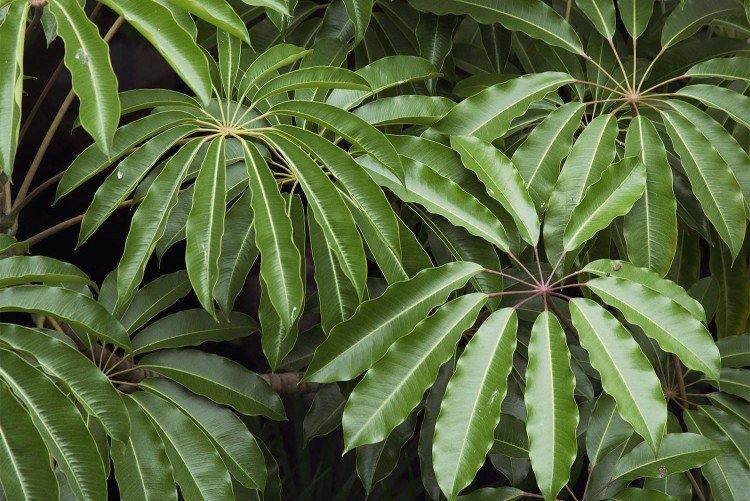
Graceful shefflera
A very beautiful and exotic species, also known as dizigoteka. This is a massive large tree with dissected emerald leaves up to 35 cm in size.
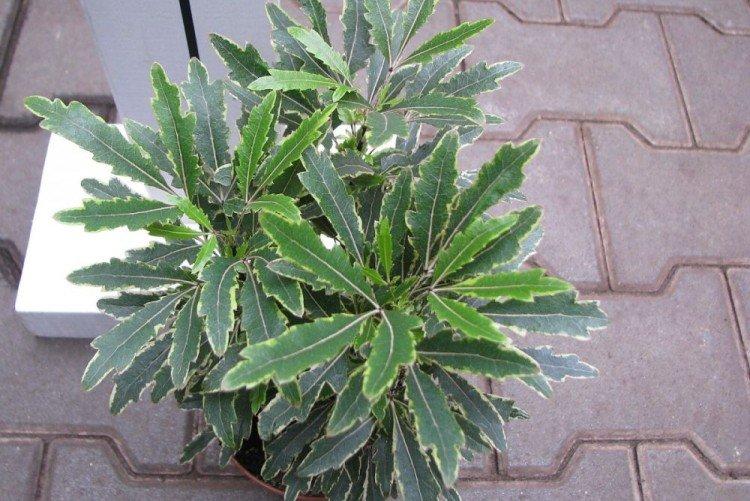
Eight-leaf sheffler
It is also called an octopus, because its leaf plates really resemble an octopus. In addition, they have an unusual olive shade.
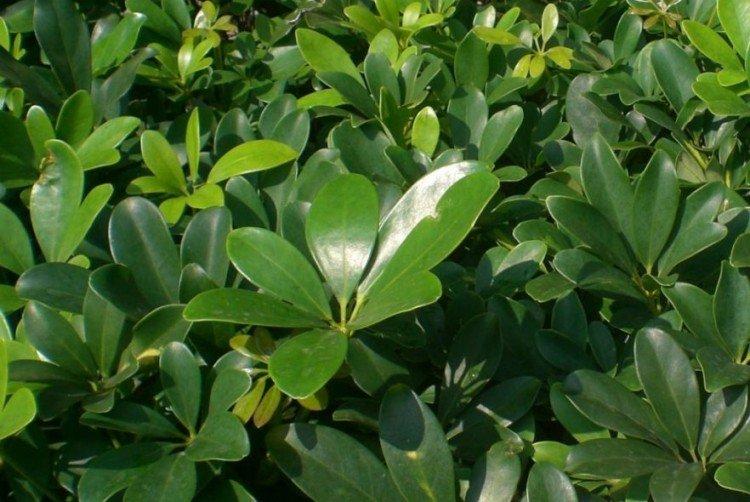
Woody shefflera
The second name of this variety is heptapleurum. Despite the name, this shefflera resembles a liana rather than a tree in the usual sense. It is recommended to plant several cuttings in one pot with support.
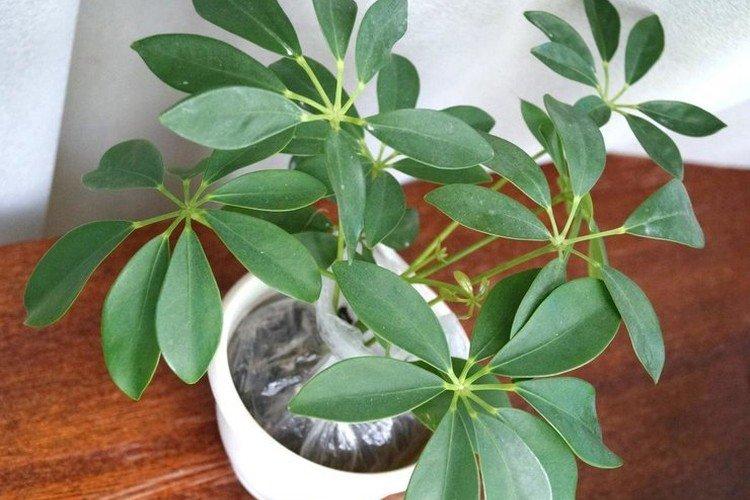
Scheffler Veitch
This species is easily recognized by the wavy edge of the leaves. And also according to the color change, because young trees first turn red, and only then turn green.
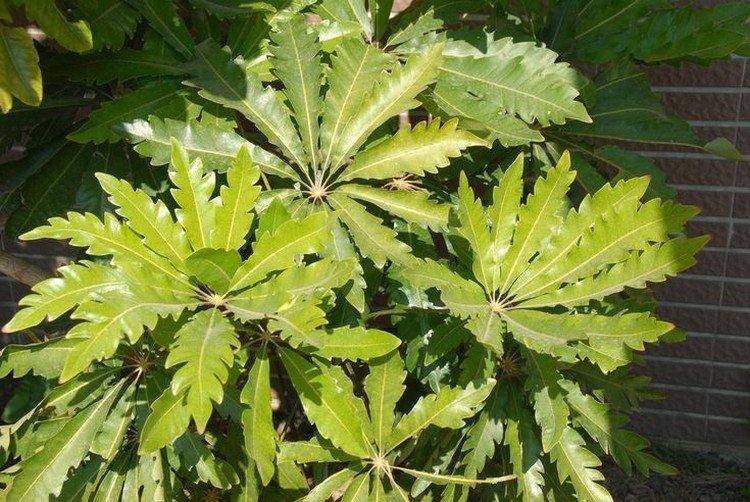
Shefflera care
Schefflera is very sensitive to temperature changes, excessive or insufficient humidity and lack of sun. On the one hand, the rules for caring for her are quite simple, but on the other, they must be strictly adhered to.
Temperature
Schefflera does not tolerate temperatures below +15 and above +23 degrees. Therefore, regardless of the season, it is advisable to fall within this range. In addition, there are separate nuances for different varieties. For example, variegated withers as soon as the temperature drops below +18.
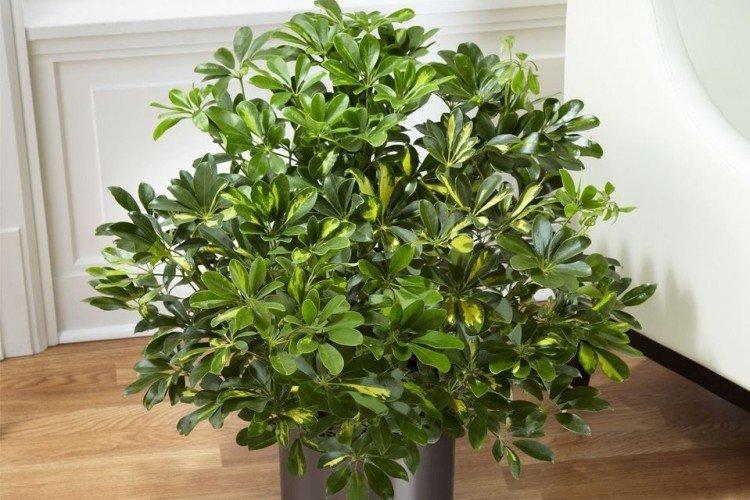
Lighting
Scheffler, with its exotic origin, still does not tolerate direct sunlight. At the same time, she needs a bright and long-lasting daylight, ideally diffused. When there is not enough natural light, lamps will definitely be needed, otherwise the flower will fade.
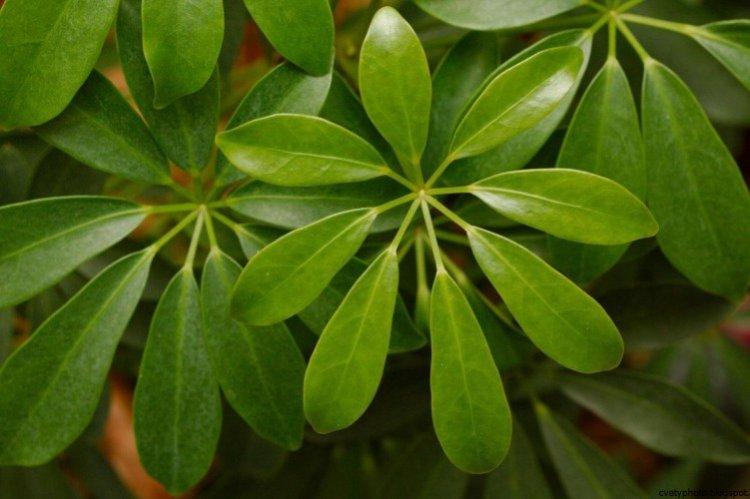
Watering
Summer watering must be very abundant, but without stagnant water. Only warm and settled water is suitable as the top layer of the soil dries out. Variegated varieties usually require less moisture. At any time of the year, the sheffler is advised to spray or place a humidifier nearby.
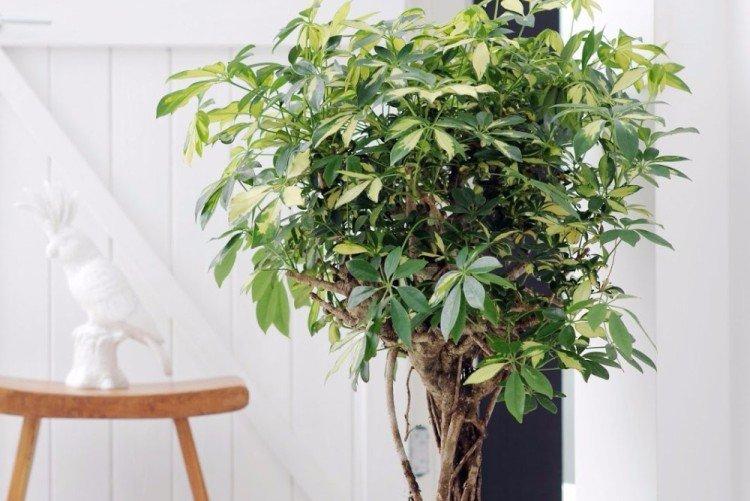
The soil
You can safely use ready-made universal mixtures or mixtures for deciduous plants.You can mix leafy soil with peat and sand, or even use hydroponics. Sheffler is not too demanding for this aspect of life.
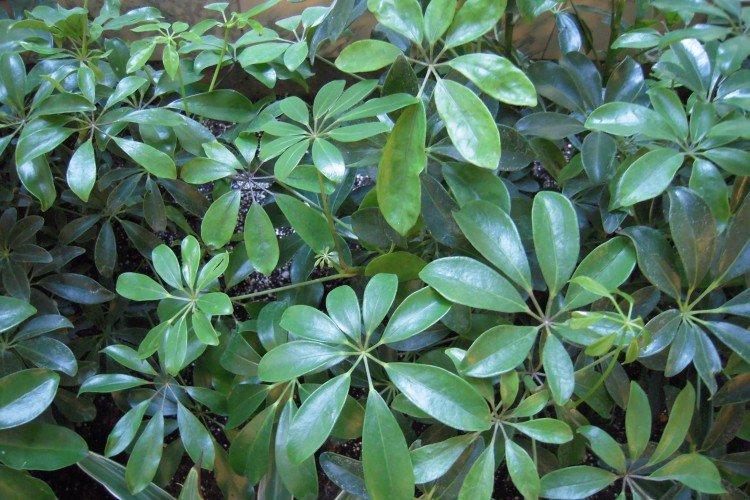
Fertilizers and feeding
In order for the shefflera to grow better and more actively, you can feed her with mineral mixtures for deciduous in the warm season. But not more often than once every 4 weeks, and in the minimum dosage. We advise you to reduce it by several times relative to the manufacturer's recommendations.
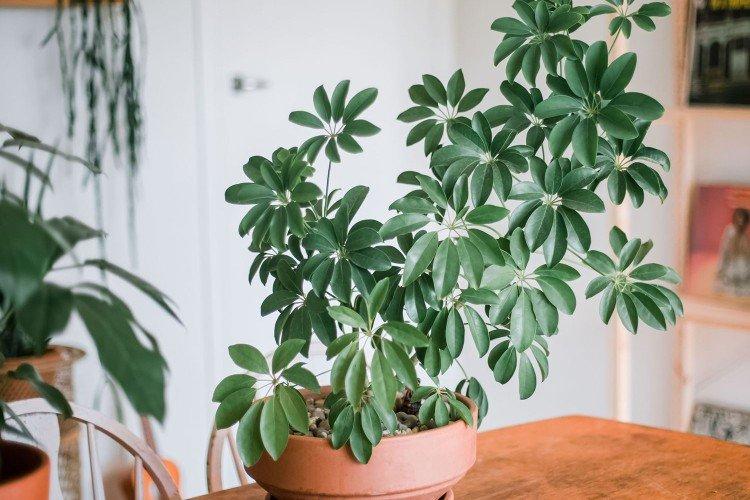
Pruning
Schefflera does not require mandatory pruning, but it can be carried out to improve the decorative characteristics of the plant. This is done in early spring, until active growth begins. And, of course, you need to cut out sick and damaged shoots in time.

Transfer
Young plants are transplanted once a year to change the flowerpot, adults - less often and as needed. The best time to do this is in the spring or fall. Do not take a pot that is too large - a couple of centimeters more is enough.
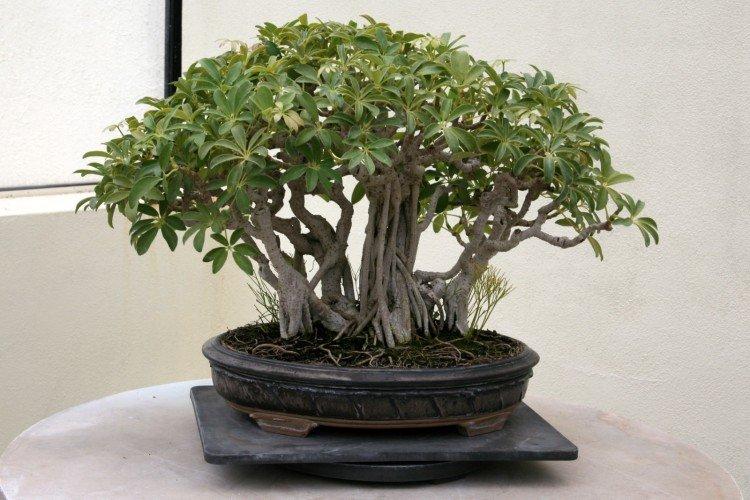
Planting and breeding shefflers
The best way to propagate shefflers is by cuttings. Moreover, you can root both shoots and leaves. They are planted directly into a substrate with sphagnum under a bag with daily airing. Rooting takes several months. Cuttings are best cut from the middle of the shoots about 15 cm long.
Old tall plants can be propagated by layering in early spring. Make a small incision on the trunk, surround it with wet sphagnum, cover with foil and wait for the roots to appear. When its own root system is formed at the top, it can be cut and planted.
Seed propagation is long and ineffective, but technically possible. Seeds are planted in early spring under a greenhouse in a universal soil, and germinated at 20-25 degrees with daily ventilation for several months.
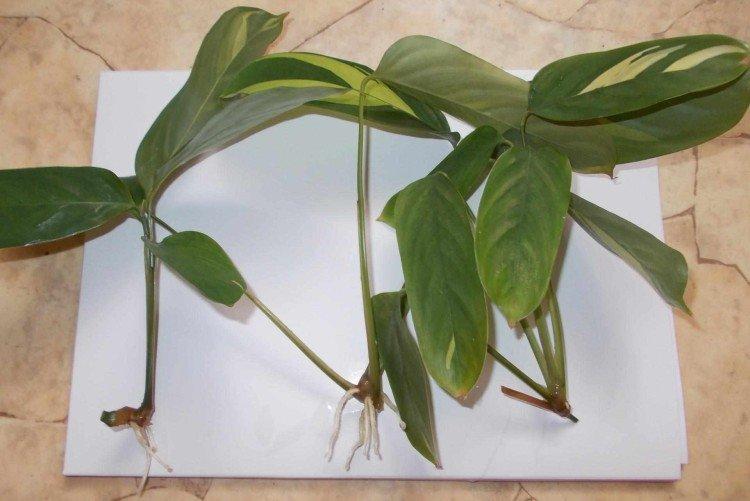
Pest and disease control
Most often, the shefflera suffers from the fact that the room is too hot or too cold. In response to this, the plant begins to shed its leaves. In addition, an excess of moisture leads. And too dim leaf plates indicate a lack of light.
Brown spots and putrefactive foci indicate the development of the fungus. Most often this happens in winter with too frequent watering. It is necessary to carefully transplant the flower, cut off the damaged areas, treat with fungicides and adjust the regime.
Sometimes a spider mite appears on the shoots and leaves of the sheffler, which is easy to identify by a thin web. Use a special indoor insecticide and repeat the treatment twice at the intervals indicated in the instructions.
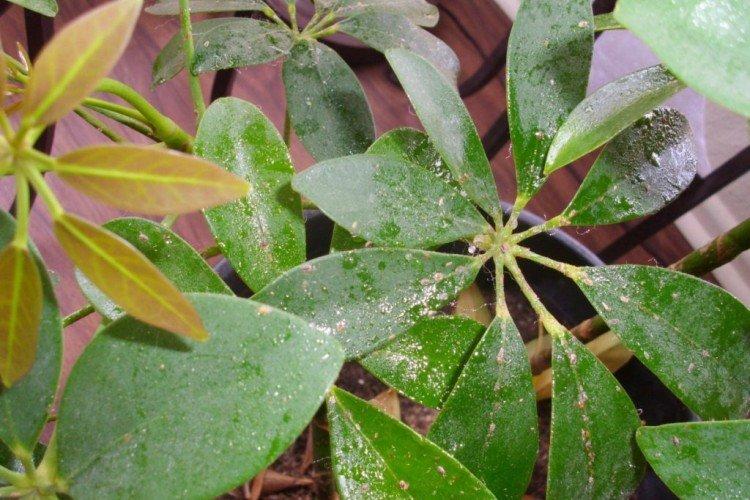
Schefflera - photo
Schefflera is charming in its simplicity and brevity. Of course, in an apartment she does not grow to such an impressive scale as in her native latitudes, but this does not make her less effective!
